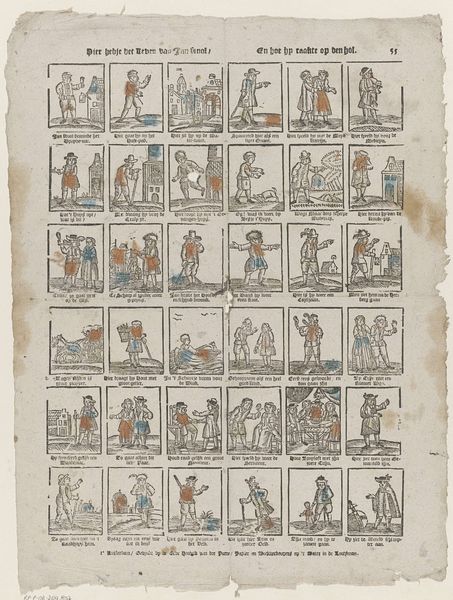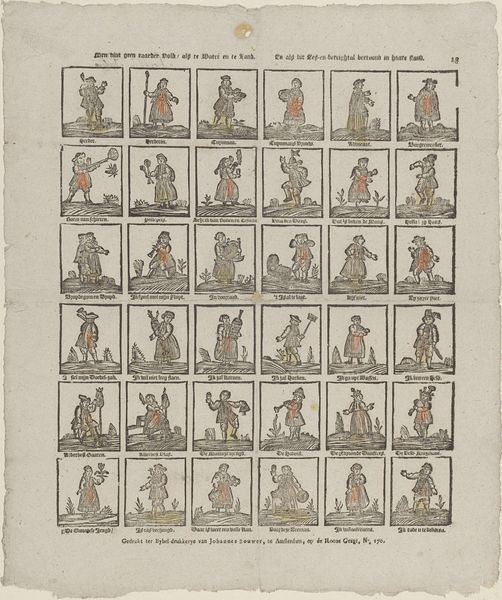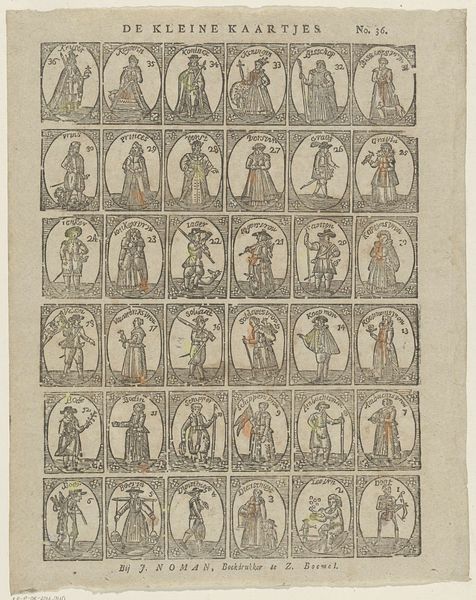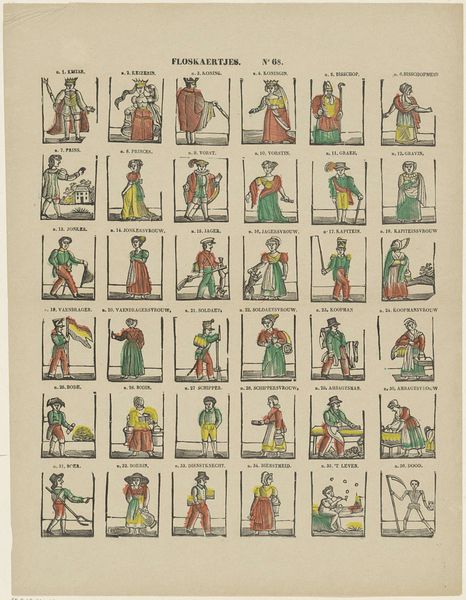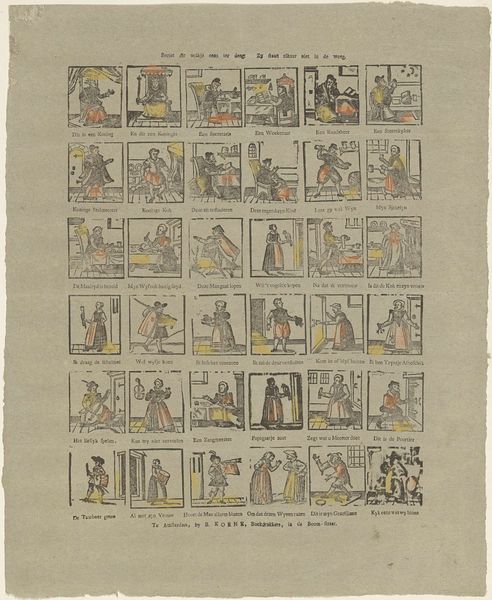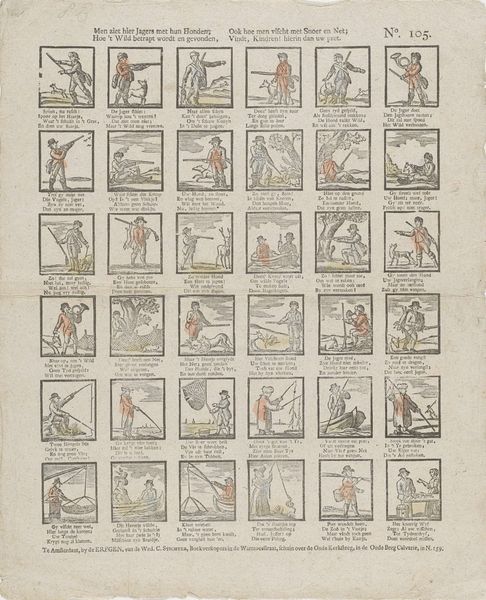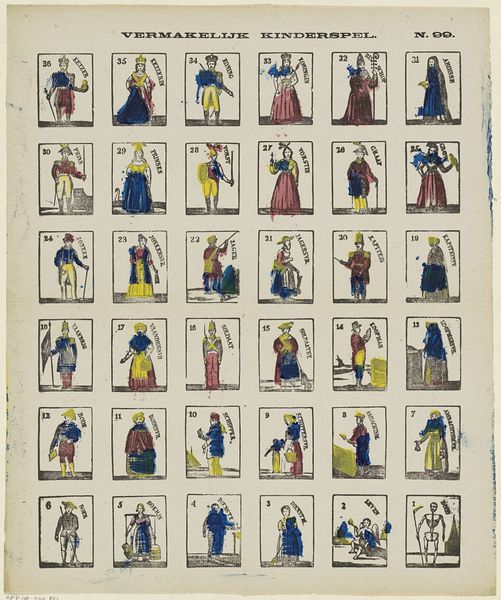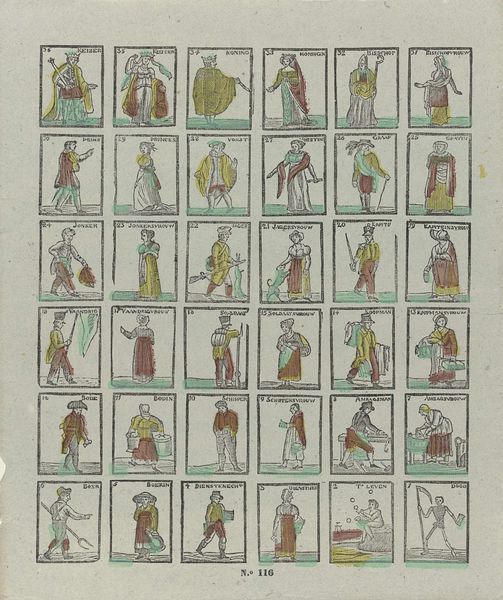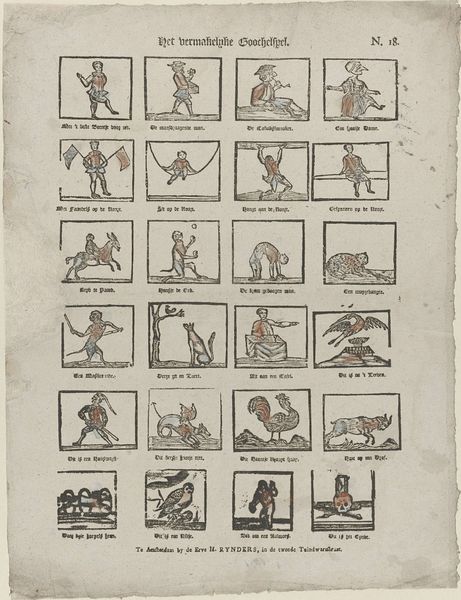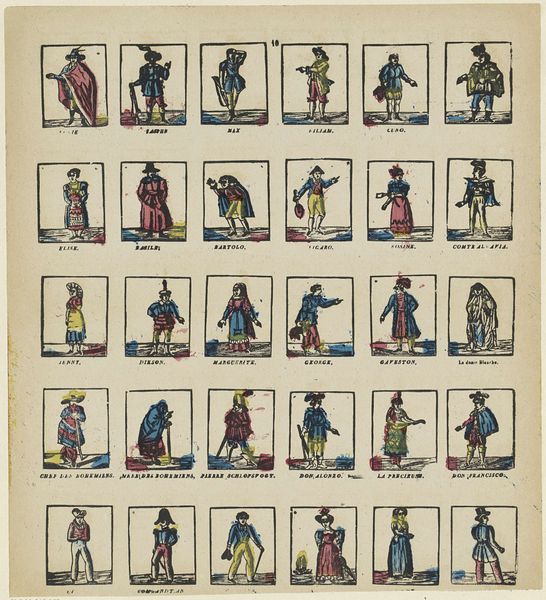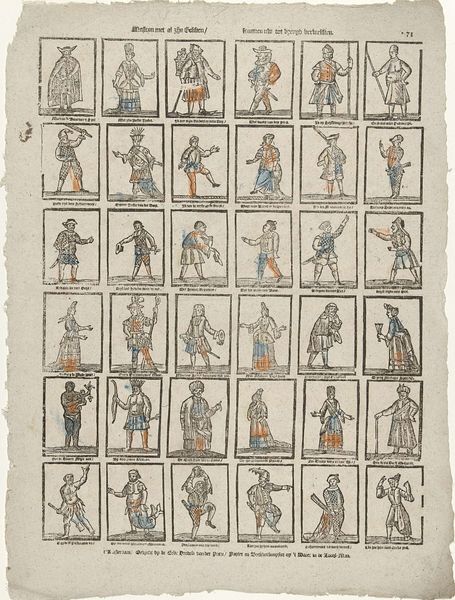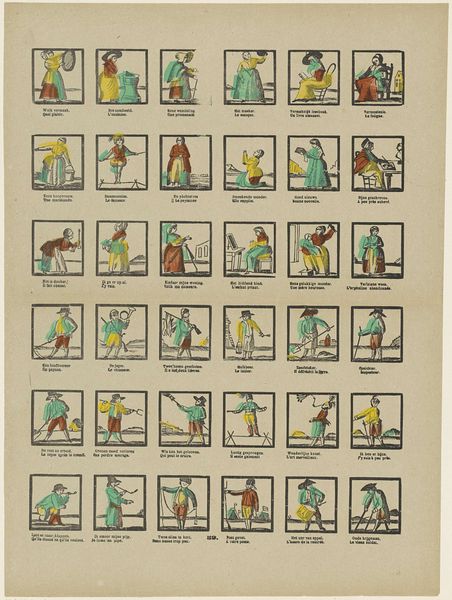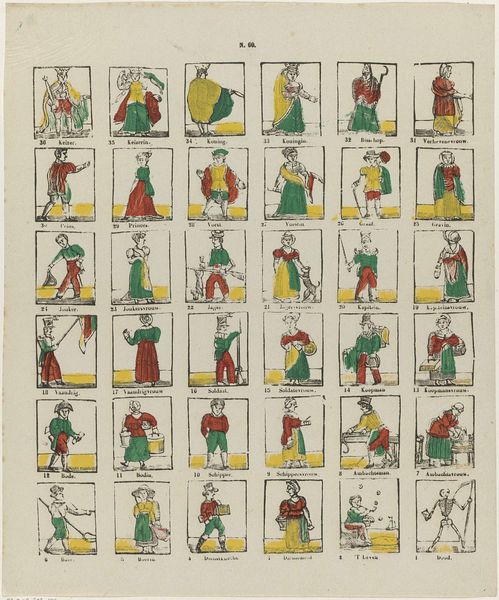
drawing, print, paper, engraving
#
drawing
# print
#
caricature
#
paper
#
genre-painting
#
engraving
Dimensions: height 408 mm, width 324 mm
Copyright: Rijks Museum: Open Domain
Curator: Well, this is an unusual piece! What do you make of it? Editor: It reminds me of a bizarre deck of cards, or maybe a kind of satirical game. The tiny figures are stiff and formal, but something about their exaggerated postures feels almost… playful, even subversive. Curator: That's astute. What we have here is titled "Floskaartjes" and comes to us from circa 1822-1849. It's a drawing, or more precisely a print made via engraving, created by Jan de Lange II, held in the collection of the Rijksmuseum. Editor: Engravings have such a capacity to carry symbolic meaning and in this one, I see this attempt to capture Dutch society— a royal presence alongside farmers, soldiers, craftsmen... Each little frame appears to capture its own complete symbol. But I have to admit, beyond this very general impression, I am curious, what was this really made for? Curator: Indeed! It would have been printed, most likely as part of a series by J. de Lange’s printing shop. One could see this artwork within a broader cultural phenomenon wherein satirical depictions and visual commentaries of everyday life took root, which coincided with broader social shifts of this period. Consider it as something of a social mirror – exaggerated, yes, but recognizable. Editor: So it’s more social commentary than playing cards? The visual shorthand the artist uses to communicate class and role is fascinating. Is there much established meaning attributed to each of the figures portrayed? Curator: This sort of imagery helped reinforce and negotiate class divisions. These popular prints contributed to creating and disseminating social stereotypes of the era, which often had political undercurrents. In that, their symbolism, their caricature, they spoke volumes beyond their miniature scale. Editor: Yes, I think I am beginning to see how it can almost function as a coded map of the Netherlands in that era. Thank you for shedding more light on what I initially interpreted as an intriguing visual catalogue. Curator: It's a pleasure. A small piece like this opens a surprisingly large window into the society that created it.
Comments
No comments
Be the first to comment and join the conversation on the ultimate creative platform.

